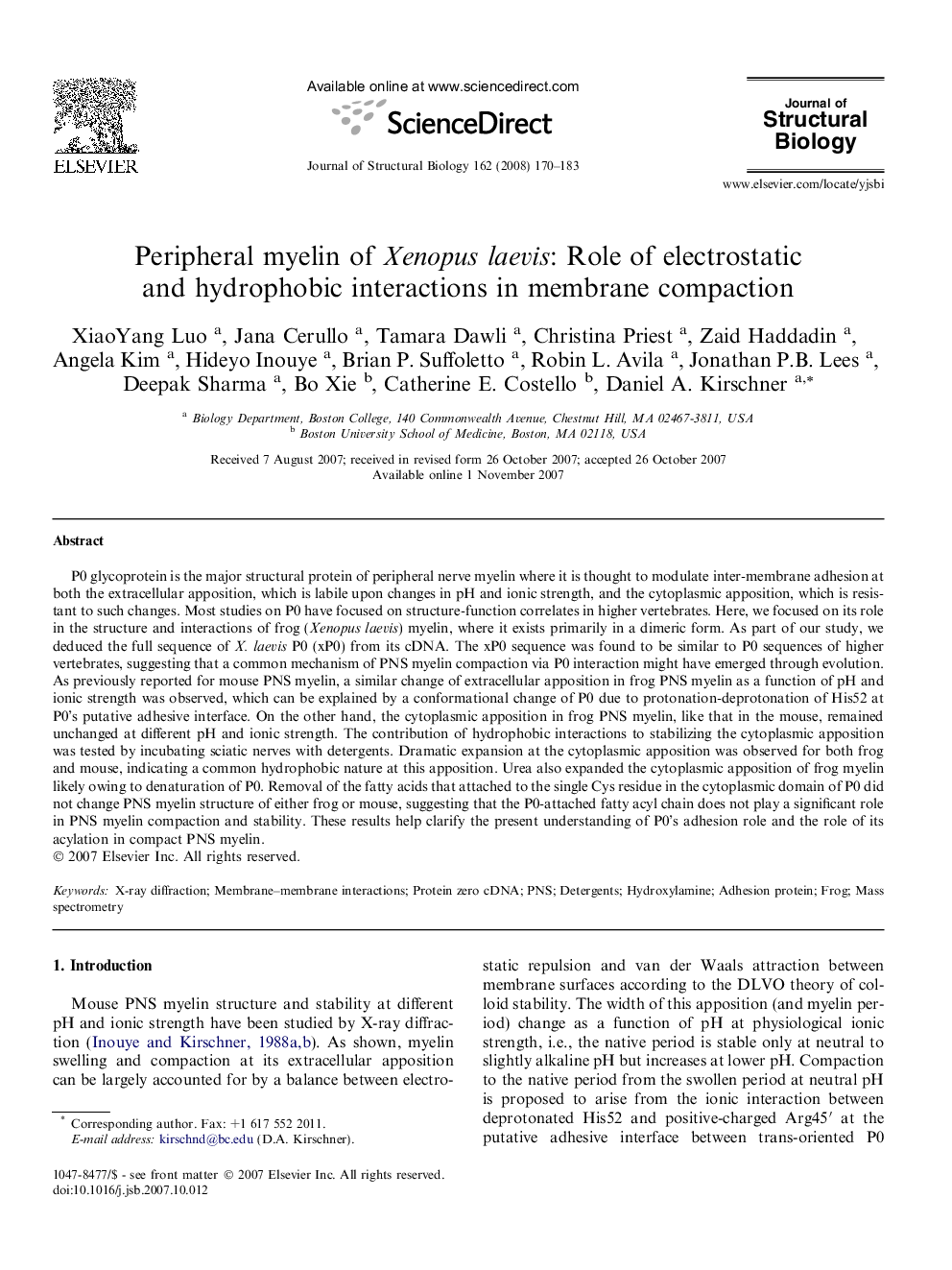| کد مقاله | کد نشریه | سال انتشار | مقاله انگلیسی | نسخه تمام متن |
|---|---|---|---|---|
| 2829260 | 1162797 | 2008 | 14 صفحه PDF | دانلود رایگان |

P0 glycoprotein is the major structural protein of peripheral nerve myelin where it is thought to modulate inter-membrane adhesion at both the extracellular apposition, which is labile upon changes in pH and ionic strength, and the cytoplasmic apposition, which is resistant to such changes. Most studies on P0 have focused on structure-function correlates in higher vertebrates. Here, we focused on its role in the structure and interactions of frog (Xenopus laevis) myelin, where it exists primarily in a dimeric form. As part of our study, we deduced the full sequence of X. laevis P0 (xP0) from its cDNA. The xP0 sequence was found to be similar to P0 sequences of higher vertebrates, suggesting that a common mechanism of PNS myelin compaction via P0 interaction might have emerged through evolution. As previously reported for mouse PNS myelin, a similar change of extracellular apposition in frog PNS myelin as a function of pH and ionic strength was observed, which can be explained by a conformational change of P0 due to protonation-deprotonation of His52 at P0’s putative adhesive interface. On the other hand, the cytoplasmic apposition in frog PNS myelin, like that in the mouse, remained unchanged at different pH and ionic strength. The contribution of hydrophobic interactions to stabilizing the cytoplasmic apposition was tested by incubating sciatic nerves with detergents. Dramatic expansion at the cytoplasmic apposition was observed for both frog and mouse, indicating a common hydrophobic nature at this apposition. Urea also expanded the cytoplasmic apposition of frog myelin likely owing to denaturation of P0. Removal of the fatty acids that attached to the single Cys residue in the cytoplasmic domain of P0 did not change PNS myelin structure of either frog or mouse, suggesting that the P0-attached fatty acyl chain does not play a significant role in PNS myelin compaction and stability. These results help clarify the present understanding of P0’s adhesion role and the role of its acylation in compact PNS myelin.
Journal: Journal of Structural Biology - Volume 162, Issue 1, April 2008, Pages 170–183